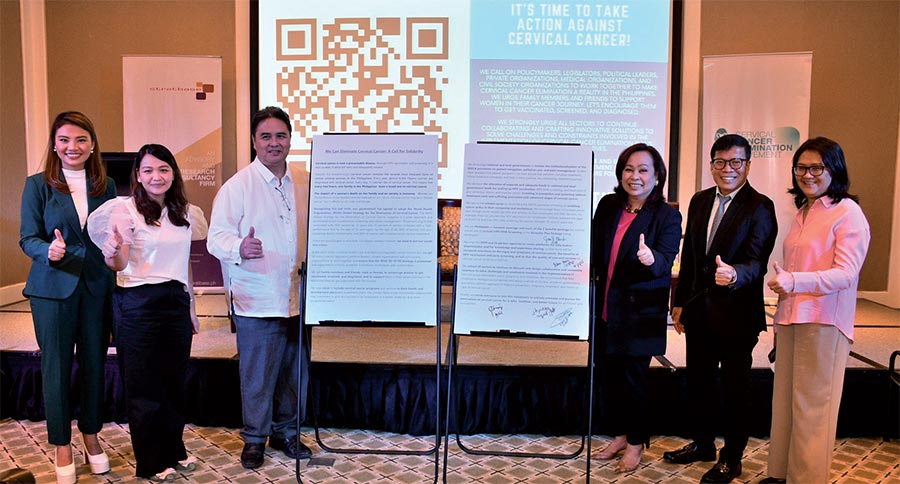Cervical cancer is one of the world’s most common forms of cancer. In the Philippines, it is the 2nd most frequent form of cancer among women, and 3rd leading cause of female cancer death. An estimated 8,000 new cases are diagnosed each year, with a mortality rate of 7.9 per 100,000 women.
However, there have been significant advances in the prevention, diagnosis, and treatment of the disease. But while there are proven and cost-effective measures for eliminating it, these have not been widely implemented in regions of the world where the disease burden is highest.
It is in this regard that the Stratbase ADR Institute, in partnership with Jhpiego Philippines, Cancer Coalition of the Philippines, and Universal Healthcare (UHC) Watch, organized a hybrid town hall to discuss evidence-based and cost-effective interventions that will scale up the elimination of cervical cancer in the Philippines and to officially launch the Zero Cervical Cancer Movement.

“In 2020, the World Health Organization (WHO) released a global strategy to eliminate cervical cancer. There is a vision of a world where cervical cancer is eliminated as a public health problem, following the 90-70-90 targets that hopefully would be met by the Philippines,” Stratbase ADR Institute Prof. Dindo Manhit said.
Under the 90-70-90 target, 90 percent of girls should be fully vaccinated with HPV vaccine by 15 years of age by 2030; 70 percent of women are screened with a high-performance test by 35 years of age and again by 45 years of age; and 90 percent of women identified with cervical disease receive treatment. HPV vaccination, which is considered the first line of defense against cervical cancer has also been revised.
“The WHO’s Strategic Advisory Group of Experts on Immunization (SAGE) has recommended updating the dose schedule for HPV. Originally, HPV vaccination was 1 dose but this has been changed to 1 or 2 doses for women ages 9-20 and 2 doses with a 6-month interval for women older than 21,” Dr. Efren Domingo, president, Philippine Obstetrical and Gynecological Society said.
The Philippines currently has a cervical cancer control program aimed at expanding public knowledge against the disease, screening of the population, and developing a system for patient treatment. Progress however has been difficult.
“The objectives are very challenging because it will involve a lot of the sectors in the community. As oncologists, we cannot do it alone. We must collaborate with the government, with the public health sector, community experts, and pain and rehabilitation specialists,” Dr. Domingo added.
To accelerate efforts to bring down the incidence of cervical cancer, the groups attending the town hall signed a petition calling for policymakers, legislators, political leaders, private organizations, medical organizations, and civil society organizations to work together to make cervical cancer elimination a reality in the Philippines.
The petition also called for institutionalization of the National Integrated Cancer Control Act (NICCA) provisions on patient navigation, palliative care, and pain management, scaling up HPV vaccination, HPV screening, and treatment of precancerous lesions and invasive cancer. Also hammered is the need for the private sector to implement cervical cancer prevention and treatment programs and policies and to have an enabling policy in their companies and workplaces.
Finally, it called for PhilHealth to expand coverage and reach of the Z benefits package for cervical cancer and to include HPV Screening in the Konsulta Plus Package being developed.





